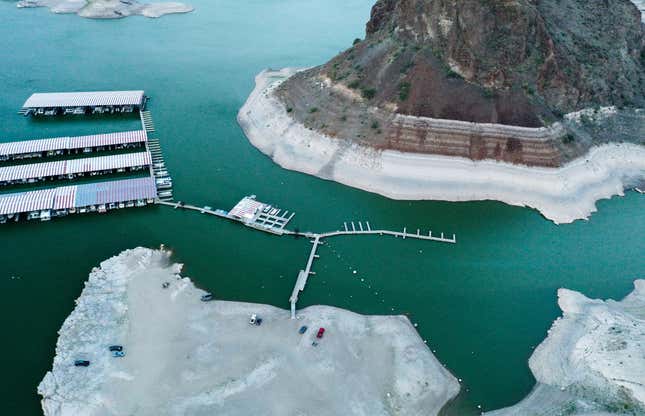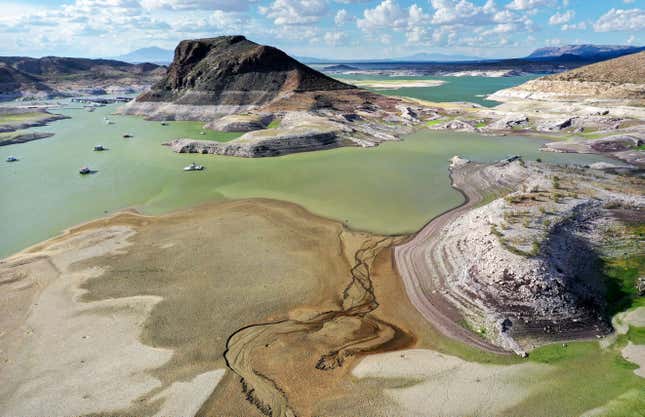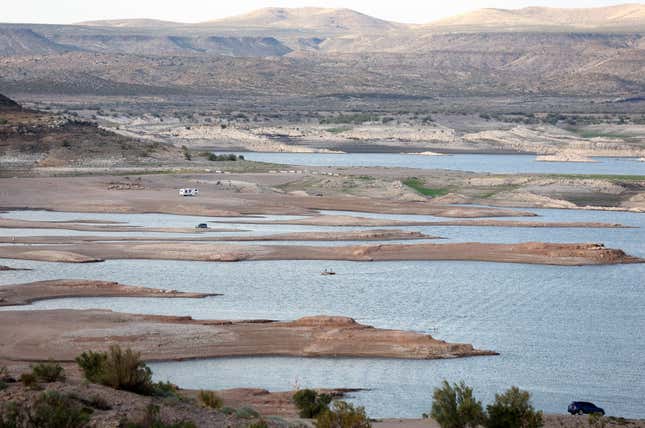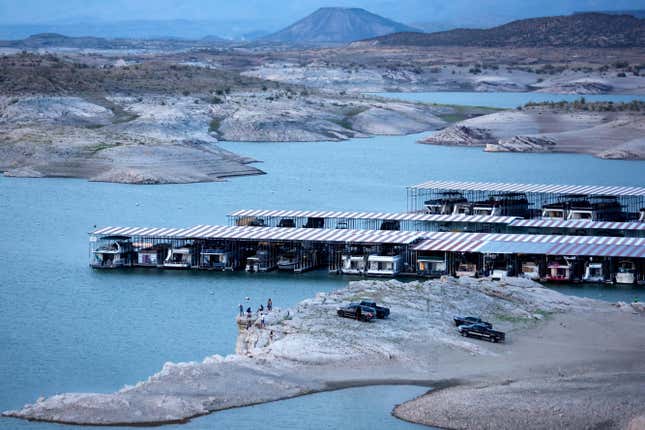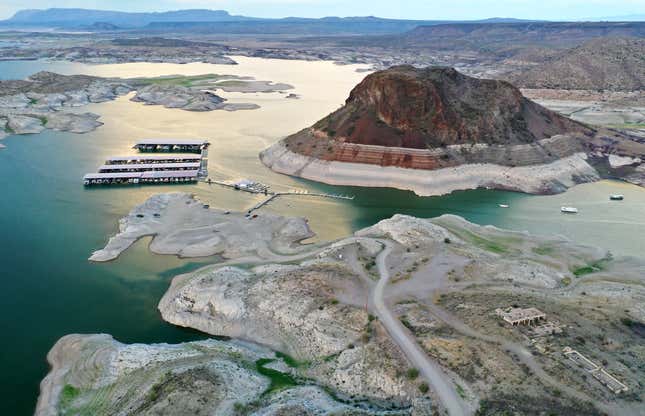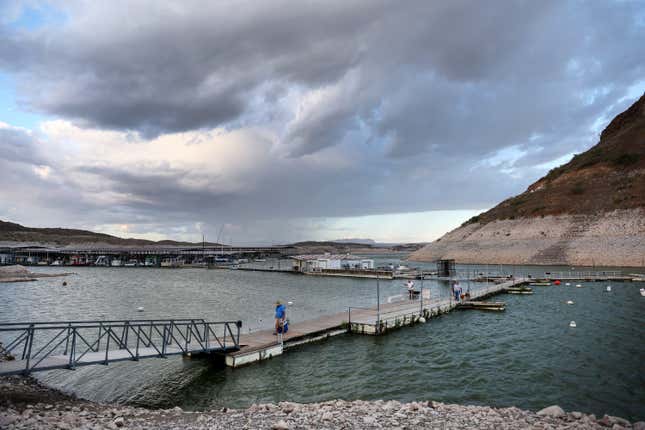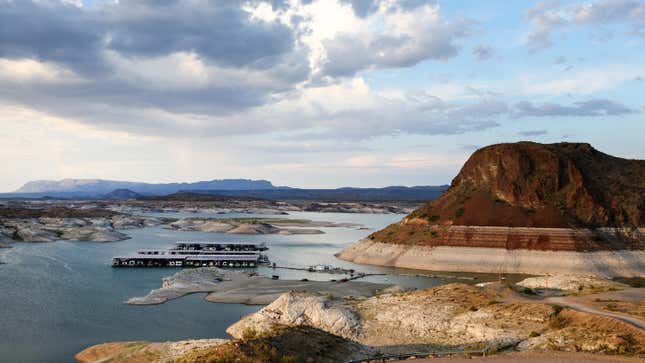
Like Lake Mead and Lake Powell along the Colorado River, New Mexico’s largest reservoir has reached alarmingly low levels. Photos taken last week at Elephant Butte Reservoir, which is located along the Rio Grande, show stark “bathtub rings”—mineral lines that show where the water levels previously sat—and huge swathes of newly exposed shore as the water keeps dropping.
As of Thursday, the water level in the reservoir sat at just above 4,291 feet (1,308 meters)—well below the August monthly average elevation of 4,347 feet (1,325 meters). The last time the reservoir was this low was in 2013, when water hit 4,286.25 feet (1,306.45 meters).
